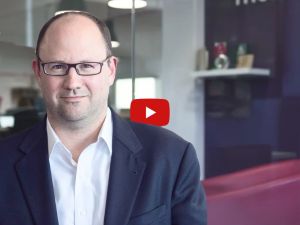Retiring from work doesn’t necessarily have to mean retiring from investing. Quite the opposite, in fact. By carrying on investing in retirement you can secure your future. We here at Moneyfarm are about to reveal some top strategies and offer you some useful tips on how to maximise your retirement savings to achieve financial stability.
Different types of retirement accounts
For many people, investing for income in retirement is limited to contributing to pensions. There are several types of pensions. They include:
- The State Pension
- Workplace pensions (defined benefit and defined contribution)
- Private pensions
The State Pension is available to most UK residents, but as it is a mandatory benefit for those who meet the qualifying criteria, it is not really considered to be an investment.
Social Security Optimization Strategies
To qualify for the full new UK State Pension, you need 35 qualifying years’ worth of NI contributions. If you have gaps in your NI record, you can make voluntary National Insurance contributions.
UK residents also have the ability to defer pension withdrawals for as long as they wish. That isn’t the case for US expats living in England.
Required minimum distributions (RMDs)
The points outlined above relate to UK residents. If you are a US expat living in the UK, you need to be aware of RMDs.
If you’re approaching or are already in retirement, you are obliged to start withdrawing from tax-deferred retirement accounts at the age of 73 for anyone born in 1959 or earlier or at 75 if you were born in 1960 or later. Please be aware that the rules relating to 401ks are slightly different. You can find out more from the taxesforexpats.com website.
Catch-Up Contributions
Catch-up contributions are another thing that relates to US citizens or expats. If you check your plans and find you’re coming up short, you can make the following catch-up contributions:
- For 2015 to 2019 – up to $6,000
- For 2020 to 2021 – up to $6,500
- For 2023 and 2024 – up to £7,500
These figures relate to the 401k, 403(b), SARSEP, and governmental 457(b) plans.
The difference between the State Pension and workplace pensions
Workplace pensions are not mandatory but they are subject to automatic enrolment. This means that if you are between 22 and State Pension age (66, increasing to 67 from May 6, 2026), you earn over £10k per annum and are employed by an employer for a minimum of 3 months, you will automatically be entered into that employer’s workplace pension scheme.
However, workplace pensions differ from the State Pension in that your employer contributes a minimum of 3% of your salary while you pay a minimum of 5%. You can contribute more, and it’s this flexibility that gives you a degree more control, meaning they can be considered more like investing for retirement.
Also, while the State Pension is only available as a four-week payment beginning five weeks after you reach State Pension age, a workplace pension can be accessed at age 55 in lump sums or via drawdown.
Tax-advantaged accounts
Given the importance of retirement planning, the UK government allows certain tax-advantaged accounts. The term “tax-advantaged” relates to types of investment vehicles that are either exempt from tax, are tax-deferred, or provide other kinds of tax benefits. They include:
- All types of pensions
- All types of ISAs (including SIPPs)
- Venture capital trusts (VCTs)
- Enterprise investment schemes (EISs)
- Seed enterprise investment schemes (SEISs)
VCTs, EISs, and SEISs may not be the best invest-in retirement options as they carry more risk, something that most retirees wish to avoid.
Investment strategies for retirees
For most people, investing in retirement is all about generating as much income as you can while leaving sufficient funds in your pension pot(s) to allow you to enjoy the retirement lifestyle to which you aspire for as long as possible. Your State Pension on its own is highly unlikely to be enough. Even your State Pension and your workplace pensions might not be enough. That’s why planning for retirement is so vital, and the key to that is regularly establishing that your retirement investments are performing according to plan. You can use the Moneyfarm pension calculator for periodic updates.
If you think they are underperforming, you have the option to transfer or consolidate your pensions.
Sorting your pension(s) into separate pots is a way of securing an income in retirement, and if done correctly, it can help you ride out the inevitable highs and lows of volatile stock markets,
You’ll need a regular cash income for life’s everyday expenses. Most people provide for this via pension drawdown or by using a portion of their pension pot to purchase an annuity. But ideally, you also need a way of generating income in retirement, which pension drawdown can provide.
Income generation in retirement
Taking money out of your pension pot(s) when you retire lessens the balance. If you didn’t do your financial planning as well as you might have, you could find your funds getting dangerously low and maybe even disappearing altogether. Investing in retirement in the right way will provide you with income to replenish what you withdraw, or even mean you don’t have to withdraw much, if anything at all.
If you aim to leave your pension pot invested and take money from it, you should consider several things when contemplating what to invest in.
- Your appetite for risk: The amount of risk you are prepared to entertain affects the way your investments rise and fall in value. It impacts how much income you’ll be able to take and for how long.
- Life expectancy: According to the ONS, men who were 65 in 2020 can expect to live another 19.7 years, while women can expect another 22 years. It’s a good indicator of how long your pensions will need to last.
- Inflation: Over an extended period, inflation (even low inflation) will erode the purchasing power of money held in savings accounts.
Options for investing in retirement
As far as investment options in retirement are concerned, there are three you can take depending on your investment knowledge and your objectives:
- Use the services of a financial adviser
- Choose from a number of ready-made options
- Create your own portfolio – only recommended if you have experience with investing
If you decide to use the services of a financial adviser, before talking to them, ensure they are approved by the Financial Conduct Authority.
Investment pathways
Some workplace pension and SIPP providers might offer you something called an investment pathway. These are ready-made options linked to one of four retirement objectives
- Having no plans to access your funds for the next 5 years
- Planning to set up an annuity in the next 5 years
- Starting to take long-term income in the next 5 years
- Planning to withdraw your entire fund in the next 5 years
Before considering this approach, check out the pros and cons.
Ready-made managed investment portfolios are an excellent way of investing for income in retirement. Moneyfarm offers seven managed portfolios. They have been put together by a skilled team of investment experts, have inbuilt global diversification and comprise a wide range of asset choices. They are formulated to offer different levels of risk, with (1) being the least risk while (7) carries the highest. You can check them out for yourself on the Moneyfarm website.
Investing in stocks and shares to create retirement income
Investing in dividend-paying equities is one of the most popular ways to invest in retirement. The most common forms of equity are company stocks and shares quoted on stock exchanges. Stock markets are, however, volatile, and the value of your investments can fall as well as rise. The recommended ways of reducing risk are creating well-diversified portfolios and investing long-term so you can ride out any stock market lows.
If you have a large sum of money to invest, you might choose to open a general investment account (GIA). The big advantage of GIAs is that there is no limit on contributions. You can manage your own GIA if you have sufficient knowledge, or you can let your financial adviser manage it for you. However, you need to be aware that GIAs are not tax-efficient. You will be liable for capital gains tax and income tax.
Mutual funds and ETFs are other investment vehicles that retirees can turn to. Both offer good diversification, but income from both is also subject to taxation, although ETFs are considered slightly more tax efficient than “mutuals” as they have less “taxable events.”
Stocks and shares ISAs – Best Tax Wrapping Investment Vehicles
Individual savings accounts, or ISAs, are undoubtedly the best tax-wrapping investment vehicles on the market. As far as investing in retirement is concerned, there are two types of ISA – cash and investment (or stocks and shares) ISAs. The problem with the cash ISA is that the interest rates offered are rather low. No better than some easy-access savings accounts. Investment ISAs offer much better interest rates which will protect the value of your savings against and even increase it above inflation in real terms. Money invested in ISA is exempt from capital gains tax (CGT), income tax, and dividend tax, too. There is, however, one drawback with ISAs, and that is you can only invest £20k per annum.
Pension Transfer and Drawdown
If you have retired and you think you might have some lost workplace pensions, you should try to track them down. The government offers a free pension tracing service. Once you locate lost pensions, you can transfer them, create new pension accounts, or amalgamate them. When you have all your funds in one place, you can, if you wish, opt for pension drawdown.
Moneyfarm offers both options – pension transfer and pension drawdown. The latter is a free service which, if taken, can help you to remain in control of your retirement income. As with all private pensions, you can withdraw 25% tax-free to do with as you wish, leaving the balance invested where it is. It can then continue growing, thereby potentially funding future withdrawals while topping up your account, thereby balancing growth and your income requirements.
Retirement planning mistakes
Nothing is more important than getting your retirement planning right. Here are seven mistakes to watch out for and try to avoid,
- Not recognising the full financial picture
- Making incorrect assumptions about your retirement age
- Making insufficient pension contributions early on.
- Not realising that your home can be a retirement asset
- Encashing pensions and investments
- Withdrawing too much money too quickly.
- Not allowing for income tax
In the same way that it is never too early to start investing, it isn’t too late either. However, starting investing in retirement means your funds won’t have as much time to grow as they would have if you’d started investing earlier. However, when we talk about investing long-term, which is one of the recommendations for reducing risk, “long term” is considered to be a minimum of 5 years. Given the average life expectancy mentioned earlier, it still leaves you plenty of time to let your fund grow and generate retirement income.
Estate planning and wealth transfer
If your financial planning is as thorough as it should be, it will include estate planning and wealth transfer after your death. Inheritance tax can reduce the money you bequeath significantly, both in terms of what happens to your pension pots or other investments such as ISAs. The “What happens to your private pension when you die?” Moneyfarm blog contains valuable information, as does another blog entitled “Inheritance ISA: allowance and tax rules.” Be sure to read them both. If investing in retirement is as successful as you hope, it would be a shame to allow HMRC to grab the lion’s share.
*As with all investing, financial instruments involve inherent risks, including loss of capital, market fluctuations and liquidity risk. Past performance is no guarantee of future results. It is important to consider your risk tolerance and investment objectives before proceeding.





